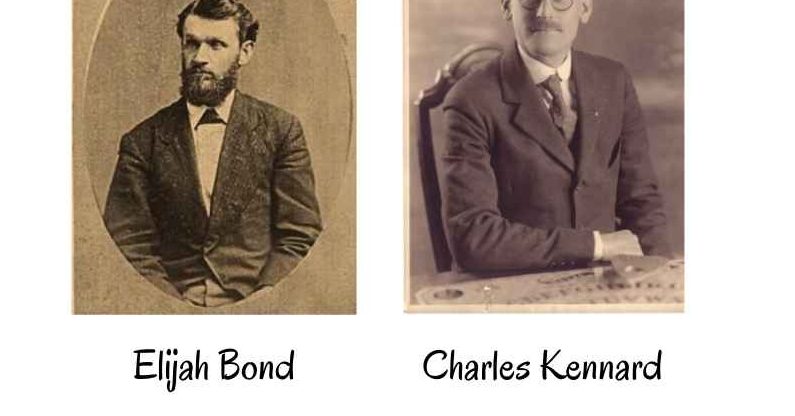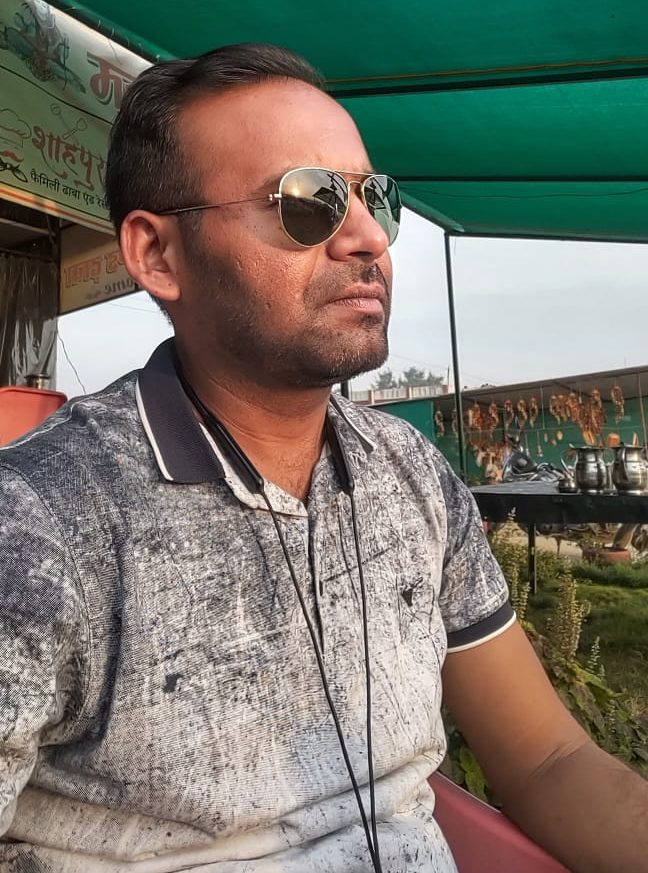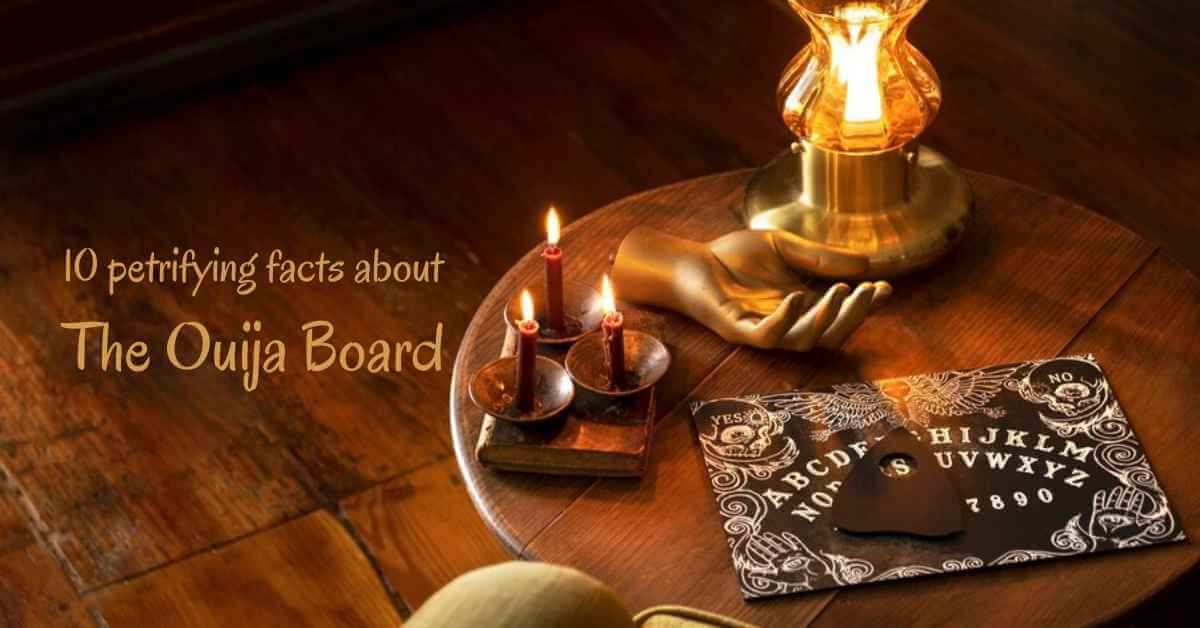What is an Ouija board? 10 petrifying facts about it
What is an Ouija Board? Ouija Boards have been around for over a hundred years, and they were used in seances and by spiritualists. Ouija boards are also known as spirit boards or talking boards. People who use Ouija boards say that they can get answers to their questions from the spirits of dead people. Some people believe that ghosts cannot speak directly, so they use the Ouija board to communicate with them.
- According to legends, what is an ouija board?
- In the 19th century, during the peak of Spiritualism, people used Ouija boards in seances.
- In 1890, two businessmen patented the Ouija board. They later sold it to Parker Brothers.
- Ouija is a combination of "yes" and "no" in French and German, respectively.
- Experts suggest that participants' movements while using an Ouija board may be subconsciously influenced by the ideomotor effect.
- It's believed ouija boards are dangerous due to how they're perceived by other cultures worldwide.
- What is an Ouija board? Can it be made out of any flat surface with letters, numbers, and symbols drawn or painted on it?
- What is planchette? How is it used in Ouija
- People claim to have had positive experiences using Ouija boards; others say the opposite is true.
- Some people think Ouija boards could be dangerous for some people.
Most people have heard of Ouija boards, but not many are familiar with the history of the spirit board.
The History of the Ouija Board
The ouija board is a game that was first used in the late 1800s, but its history dates back to ancient times. It utilizes a spirit board and letters placed on top of it to communicate with spirits. Many people wonder what makes this game so popular, or even if it works at all. If you’re reading this article, then you’re probably interested in knowing more about how this mysterious device works and whether or not it can connect people with ghosts from beyond the grave.
The History of How It Works
The spirit board was first developed by Elijah J Bond as part of his patent application for a “bibliomaniac alphabet,” which he filed on May 20th, 1890 (US Patent No 593809). The patent described a toy that utilized an alphabet printed on paper that could be placed over two small wheels with numbers around their circumference; these wheels were intended to be spun by children while they asked questions of spirits using them (Patent Application).
Although some sources claim that Bond invented the idea after watching his children play with a makeshift version made out of cardboard boxes (MythBusters), others claim there is no evidence he ever created such an object himself before creating his patent application later that year (Ghost Hunter Tools). Either way though–and regardless of whether or not he actually invented anything–the invention seemed promising enough because after spending time working out its kinks; eventually something like today’s Ouija Boards started popping up all across America!
According to legends, what is an ouija board?
According to legend, an ancient Chinese philosopher created a spirit board to commune with spirits. According to historians, Ouija boards were first documented by American Spiritualists in the late 1800s. Ouija boards were popularized as a parlor game by Hasbro in the 1960s and 70s, but they’ve enjoyed popularity among occultists for decades before that.
According to legend and history alike: An ancient Chinese philosopher created a spirit board (or “talking board”) to commune with spirits. Apparently, this didn’t go well for him or his wife; one of them supposedly died within weeks of making their first attempt at communicating with the dead via said device–though no one can confirm which person, in particular, perished as a result of their use of this device
In the 19th century, during the peak of Spiritualism, people used Ouija boards in seances.
In the 19th century, during the peak of Spiritualism, people used Ouija boards in seances. These were gatherings where people would attempt to contact a spirit using various methods. They believed that spirits provided information about their past lives and other things that occurred after death.
People would use Ouija boards to try to contact a dead relative or friend who had passed away recently. They would ask questions and try to get answers from them through the board’s movements.
In 1890, two businessmen patented the Ouija board. They later sold it to Parker Brothers.

In 1890, two businessmen named Elijah Bond and Charles Kennard patented the Ouija board. A patent is a document that officially grants someone ownership of an invention. But the board didn’t hit it off with American audiences until 1966 when Parker Brothers purchased the patent from Bond and Kennard for $4,000 and began mass-producing boards for sale in toy stores across America.
Parker Brothers went on to sell millions of Ouija boards by marketing them as “the key to conversations with ghosts.” The toy also had a hand in popularizing ghost stories among families around dinner tables during the Halloween season or Christmas Eve parties
Ouija is a combination of “yes” and “no” in French and German, respectively.
- The name Ouija is a combination of “yes” and “no” in French and German, respectively.
- The board was invented by Charles Kennard, who founded the Kennard Novelty Company in Baltimore in 1890. He was inspired to create a talking board after visiting his sister’s house one evening to find her playing with such an object with her children.
- At that time, he called it simply Talking Board; he later changed its name to Ouija after finding out about the game’s popularity among young girls at summer camp who were using it as a form of divination by communicating with spirits via the device.
Experts suggest that participants’ movements while using an Ouija board may be subconsciously influenced by the ideomotor effect.
According to experts, participants’ movements while using an Ouija board may be subconsciously influenced by the ideomotor effect. This psychological phenomenon suggests that the mind influences the body without conscious awareness. Also known as involuntary motor behavior, it has been used to explain seemingly paranormal phenomena such as dowsing rods and poltergeist activity.
The Ideomotor effect is a form of unintentional mental activity that can account for some of the movement associated with Ouija boards. When people make unconscious movements in response to suggestions or questions asked through an Ouija board, they are engaging in an ideomotor response.
It’s believed ouija boards are dangerous due to how they’re perceived by other cultures worldwide.
You may have noticed that a lot of the facts about ouija boards are centered around how other cultures perceive them. For example, it’s said that many cultures believe the use of an ouija board can result in possession by evil spirits, which has caused people in those cultures to be afraid of them. This fear is what has caused some governments and religious organizations to ban or restrict their use throughout history.
However, this doesn’t mean that everyone should completely avoid using one as they’re still considered harmless if used responsibly (and with an open mind). Just remember: even though they aren’t dangerous per se, there are still certain precautions you should take when interacting with them so as not to cause harm to yourself or others!
What is an Ouija board? Can it be made out of any flat surface with letters, numbers, and symbols drawn or painted on it?
An Ouija board can be made out of any flat surface with letters, numbers, and symbols drawn or painted on it. A piece of paper (a regular sheet of 8.5″ x 11″ is fine) will do the job just fine, as will a board you make yourself by painting letters directly onto a piece of wood or cardboard.
This is one reason why Ouija boards are so ubiquitous; they’re super easy to obtain online or in stores that sell mystical goods.
What is planchette? How is it used in Ouija
The planchette touches the letters and spells out a word, phrase, or sentence in response to questions asked by users. The planchette is a small piece that moves around the board. A typical ouija board features three legs, which are connected to a heart-shaped pointer. When using an ouija board, users place their hands on the planchette and ask questions about it. The planchette will then touch letters or numbers on the board, spelling out words and phrases in response to those questions.
People claim to have had positive experiences using Ouija boards; others say the opposite is true.
While some people claim to have had positive experiences using Ouija boards, others say the opposite is true. Some people claim to have been contacted by spirits and others by demons. Others say they were contacted by their dead loved ones.
While it’s not clear if these experiences are real or not, it’s important to remember that Ouija boards are not toys and should be treated with respect.
Some people think Ouija boards could be dangerous for some people.
Some people think Ouija boards could be dangerous for some people. How? Because it can be used for good or evil and for divination, communication with the dead and to communicate with the living. Some think that it’s a negative way of communicating with those who have passed away.
Some people believe that Ouija Boards are nothing more than entertainment, but others believe that they’re actually communicating with demons who then possess them! It all depends on what you believe in.
Conclusion
So, whenever the question of what is an ouija board arises, You may not be able to predict what your experience will be like, and that’s part of the fun. Whether you’re a skeptic or a believer, you can enjoy this game that has entertained people for years.

You wish to meet a smart freaky blogger who loves exploring myths, superstitions, and facts. That’s me. A Digital Marketer, blogger & cook. All of the above.

